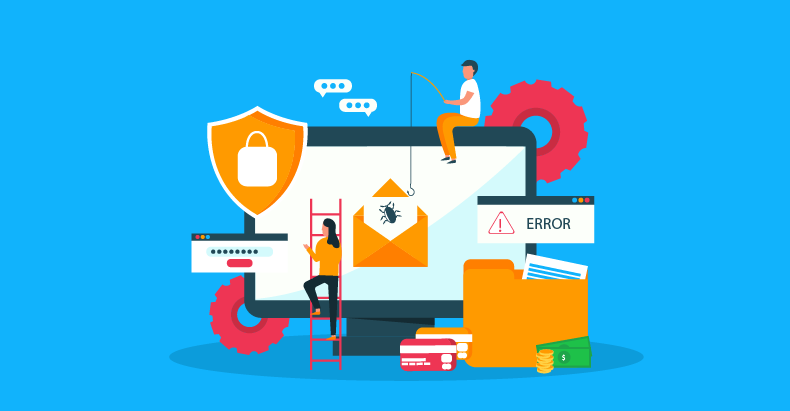IoT Testing with Kualitatem: Securing the Connected World

- February 17, 2025
- Malaika Saeed
The Internet of Things (IoT) has slowly but surely transformed how we interact with technology in the past few centuries. By 2029, we can expect the market to grow by 10.17%, which means its evolution is nowhere near over. From connecting our home devices to promoting industrial innovation, IoT is on a steady path to drive innovation.
That said, this advanced connectivity also brings along a series of challenges. Application testing services are now essential to ensure that the performance and reliability of a piece of software are up to par. In this article, we will learn more about how companies such as Kualitatem can promote that.
Why Is IoT Testing Important?
IoT testing is essential for various reasons, including the following:
Device Reliability
Nowadays, all devices are connected in some way or another, improving not only your business operations but also your daily lives. Testing is essential to make sure these devices function as they should under various conditions. This way, you can keep breakdowns and malfunctions at a minimum, not disrupting the proper functioning of the system.
Optimized Performance
About 30,000 new products hit the market every year, with around 95% being a bust from the very beginning. Very often, this happens because the product is underperforming in various scenarios. To keep the response time, functionality, and data transmission efficiency at a good level, companies should perform regular IoT testing. By being thorough when optimizing performance, system failures can become a thing of the past.
Data Security
IoT devices deal with a lot of sensitive data, so robust security is of great importance. By undergoing IoT testing with the help of companies such as Kualitatem, you can find security bugs before they become a problem. You can find weaknesses and vulnerabilities in the security features, protecting the user against potential privacy leaks.
Early Bug Detection
Bugs can be very costly, especially when your team doesn’t catch them on time. Fixing them can also be time-consuming, and potential complications often reach the end user. When you use IoT testing, you can take advantage of functions such as penetration testing and automation to catch issues early on. This way, you won’t have to worry about hidden defects compromising the overall quality assurance.
Compliance and Standards
Whenever you deploy an IoT product on the market, you will have to respect a series of standards and regulations implemented by the industry. With testing, you make sure that your device meets these standards, avoiding legal complications. Seeing as more and more people are obsessed with lawsuits nowadays, IoT testing can ensure you do not get caught up in a technicality.
UX Improvement
You can only call an IoT product successful when it’s surrounded by positive user experience. This can be achieved by using an IoT software testing company such as Kualitatem. This gives you access to the necessary resources. As a result, you can perform the required compatibility and usability tests to make sure you meet user expectations.
How IoT Devices Are Tested for Quality Assurance
When securing the connected worlds through IoT testing, it’s important to remember that there is no one test to rule them all. Like with any other type of software product, you should test every possible layer. Most of the time, this involves performing various tests in parallel throughout the development cycle.
These tests can include the following:
Connectivity Testing
Connectivity is the exact thing that makes people so crazy about IoT devices. So, of course it needs testing. A good test automation company should help you review the communication strength from all ends, whether it connects to the user or other IoT devices.
For example, can the device easily connect to the network? Can it perform when you are offline? How well does it transmit data? You should use software testing programs such as Kualitee to take a better look at all these things.
Security Testing
IoT devices communicate through networks, and even a small loophole or weakness can make it easy for cyberattacks to hit you. With hackers getting faster than ever, each IoT product has to be tested thoroughly before launch.
This is why security and IoT penetration testing has become necessary. It checks if there are any vulnerabilities, risks, or threats in the encryption. This is essential for preventing malicious attacks in the long run.
Performance Testing
When you design an IoT product, you think about the ideal scenarios where it can perform at ease. That said, despite your best efforts, an internal or external factor can cause the performance to drop.
A reliable software testing company should test performance in different circumstances to improve user experience. This includes maximum load capacity or how well it works when used for a longer time than normal. By catching performance glitches or blocks, you can ensure the IoT device works properly for the intended user.
Compatibility Testing
There are more than 25 billion IoT devices currently in use. Each has its own complex system. Before releasing such a device yourself, you need to make sure it’s compatible with the systems it’s intended to connect with.
For instance, when performing IoT compatibility testing, make sure the device works with every browsing type or operating system. Is your device compatible with only the current versions? Does it work just as well with the older ones? Catching potential compatibility problems early on can improve user experience, as it offers the advantage of adaptability.
Functional Testing
Functional testing is an essential part of the QA process. That’s because it validates whether or not the system works as it is intended. It doesn’t necessarily look at the security aspects or the overall performance. Instead, the focus is on the core functionality.
For instance, test automation services can check if the hardware or software components perform correctly. This includes how well they perform during adjustments or input modifications, and how well they can adapt to change. Regression testing is often conducted alongside functional testing, reducing future bugs.
Real-World Testing
A program or device might work perfectly in theory. Still, when it is introduced into the real world, it might turn out to be useless. This is why real-world IoT testing is essential. It evaluates whether or not the device can function in an actual usage scenario.
With real-world testing, you assess a device’s ability to adapt to the real world, simulating common daily usage. This can be done through beta or metaverse testing. In this case, you put the product through a relatively controlled environment. This should tell you if it has great potential or if it is a sweet dream with no actual promise.
Best Practices for IoT Testing
IoT testing can bring a series of challenges, especially if you are not particularly familiar with it. Below are some practices that could improve your IoT testing efforts, which we recommend you use with services such as Kualitatem.
Define Clear Testing Goals
Before you even start testing, you need to have your eyes on the goals. What is expected of the device’s behavior? What should the integration points be like? What are your objectives in terms of security? Outline the objectives first so that you can create a comprehensive test case.
Focus on Load Performance
Time is precious, and almost 60% of users won’t even look at a program or app if it loads slowly. This is why you should focus on loading time and efficiency when you perform IoT testing. Use load testing services to look at things such as how the device reacts to high user volume. Is it affected by scalability or network instability? Keeping the focus on this can improve the user experience and the success of your software.
Leverage Automation
Testing can be time-consuming, especially when you have hundreds of small, repetitive tests to perform daily. Dallying on this can lead to your team wasting precious time on technicalities, potentially losing momentum. By leveraging automation, you can stay ahead of the competition. This means that you leave the repetitive tasks to testing services. This way, you will have enough time to work on the more complex cases, reducing time-to-market.
Continuous Testing
The biggest mistake that many testers make when launching an IoT product is only testing when they reach the end of a cycle. However, the high connectivity of this industry can bring volatility to a project. For this reason, early testing is a must. Whenever there is a change, perform a test to ensure adaptation. AI testing and automation can be helpful here. That’s because they can perform the action without you having to lift a finger.
The Bottom Line
Effective IoT testing might require you to check a lot of boxes during the development process. However, by using the right application testing services, you can create a robust and secure IoT device. With Kualitatem, testing is not only made quicker but much more accurate. This streamlines the process so customers can enjoy your product faster.











